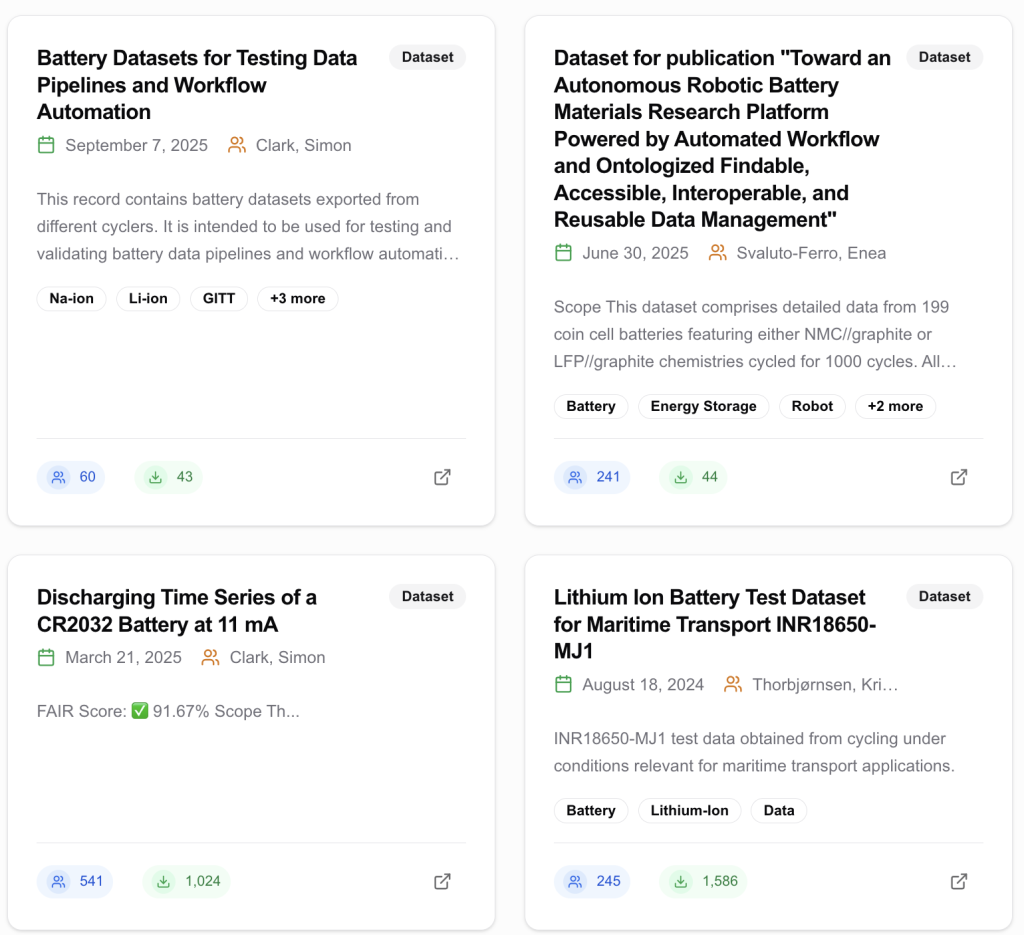research-quality battery data from around the world

The Hub is our community’s shared space for discovering and exploring research-grade battery datasets. Upload or browse data from labs and teams worldwide, compare results, and accelerate analysis with built-in plots and notebook-friends exports
The Hub Speaks BDF (Battery Data Format) out of the box – the open standard developed by the Battery Data Alliance. That means consistent metadata, quick previews, standard units, and instant visualizations so you can go from dataset –> insight in minutes
The LF Energy Battery Data Alliance (BDA) was created to bring battery companies together to work jointly to unify how batteries are handled in terms of software. The BDA is a global community advancing open-source battery data standards. Join the discussion, share feedback, and collaborate with researchers worldwide.
Have an idea? A frustration? A solution worth sharing? Let us know.
We don’t just build tools. We cultivate ecosystems.
Timestamp drift refers to the misalignment of timestamps across different devices collecting battery cycler data. It poses challenges in synchronizing data sources accurately, which can significantly impact data analysis and interpretation. Understanding and correcting timestamp drift is crucial for reliable battery performance assessment.
Inconsistent units, such as mixing ampere-hours (Ah) with milliampere-hours (mAh) or watt-hours (Wh) with kilowatt-hours (kWh), can lead to inaccurate calculations and comparisons in battery cycler data. Standardizing units for capacity, energy, and temperature measurements ensures precise and meaningful analysis.
Cycle count ambiguity arises due to practices like resetting cycle counts or handling partial cycles inconsistently. This ambiguity complicates the interpretation of cycle-related metrics and can mislead conclusions about battery health and longevity if not properly addressed.
Confusion between C-rate and current often stems from misunderstandings about how C-rate is calculated relative to nominal capacity. Without accurate knowledge of the nominal capacity, interpreting the rate of charge or discharge (C-rate) versus raw current values can be misleading, affecting performance evaluations.How does missing metadata impact the analysis of battery cycler data?Missing metadata—such as details about cathode materials, anode composition, or test conditions—limits the ability to compare datasets effectively or apply machine learning techniques. Comprehensive metadata is essential for contextualizing results and enabling advanced analytics in battery research.
Managing multiple files and varying data formats during battery cycling tests creates complexity in data consolidation and analysis. This chaos necessitates standardization efforts to streamline workflows, reduce errors, and facilitate seamless interpretation of cycling performance metrics.